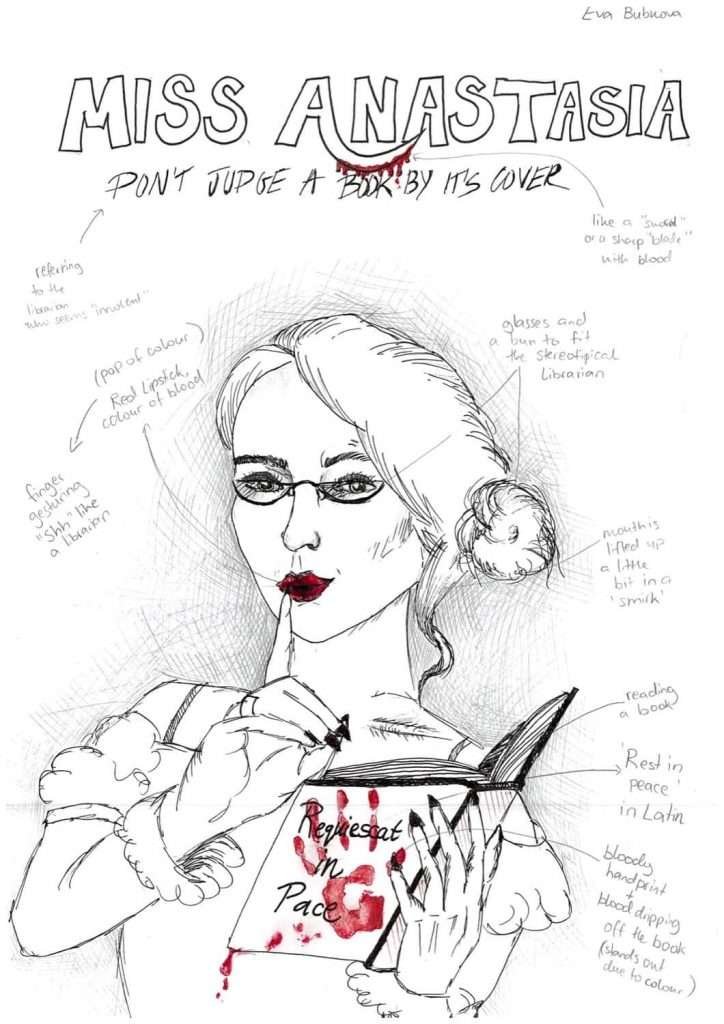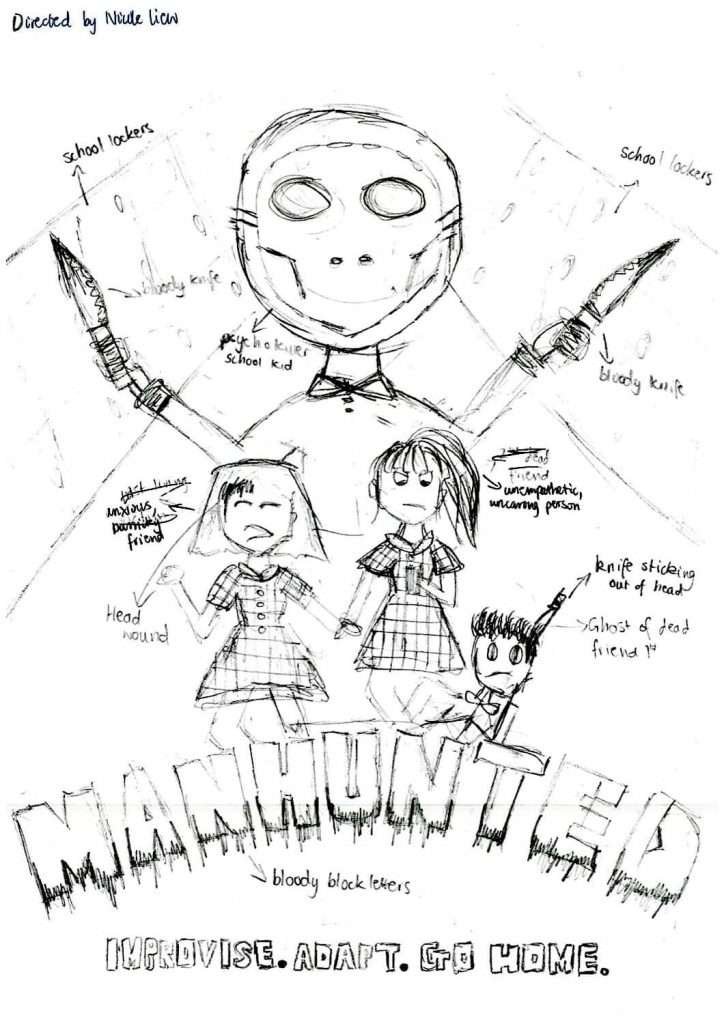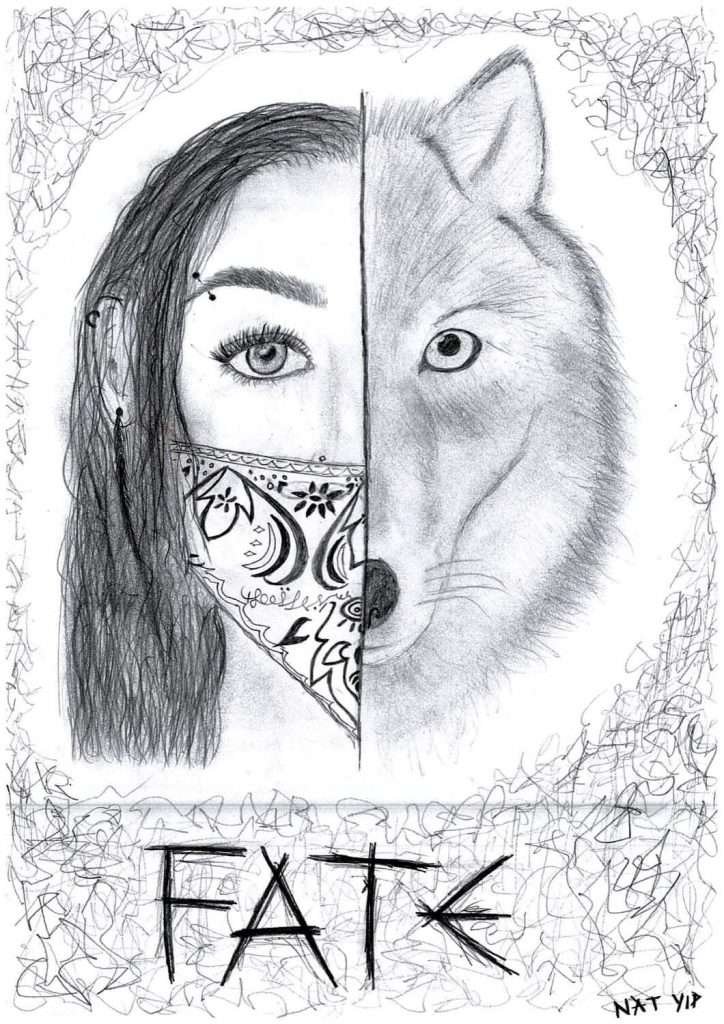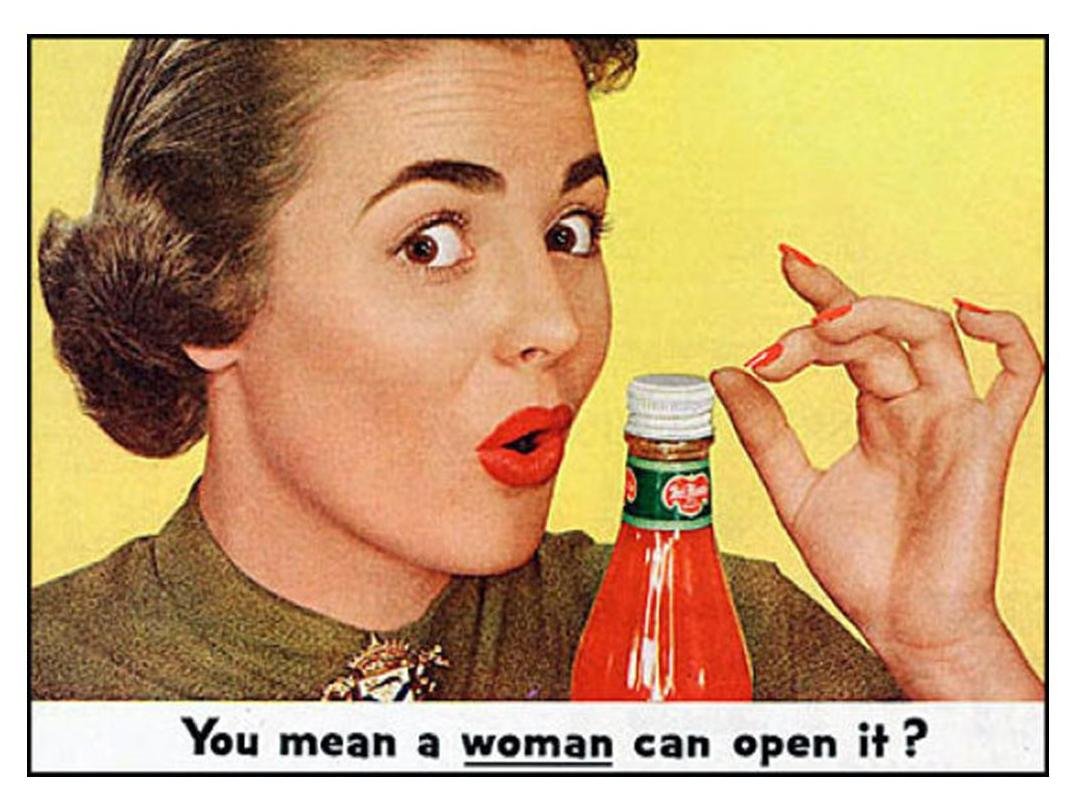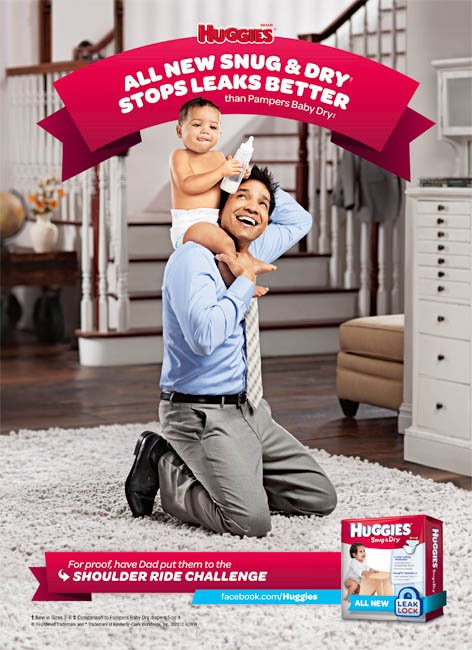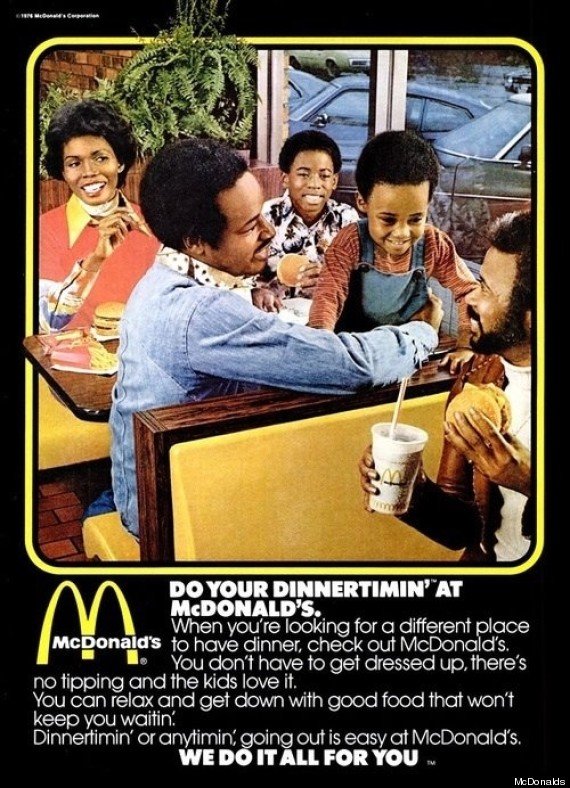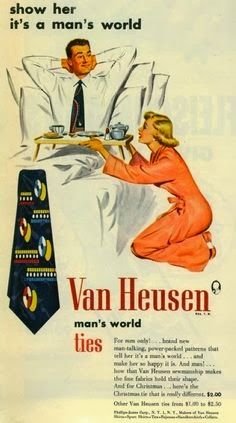
Media U1 AOS/Outcome 1
(Af Klint, 1908)
Media representations
Area of Study Overview:
Measurements of Success:
On completion of this unit you should be able to explain the construction of media representations in different products, forms and contexts, including how audiences engage with, consume and read these representations.
In this area of study you will be introduced to the concept of audience.
You will consider different readings of media products and how meaning is suggested through the complex relationships between content creators and producers, media forms and audiences.
You will also consider how audiences engage with the media to construct and negotiate understandings of the world and themselves through their participation in the consumption, reception, production, curation and distribution of media products.
You will gain an understanding of audiences as producers of media products, who create and share their own representations.
You will learn of how notions of identity and self are implicit in the ways that audiences select, create, share, engage with and read media products.
Through the examination of a range of media forms and products, you will further consider how representations of self and identity are constructed, distributed, engaged with, consumed and read.
Key Knowledge:
The nature of media representations within and across media products and forms from different periods of time, locations and contexts
Media codes and conventions used to construct media products and meanings in different media forms
The construction of representations within and across products and forms from different periods of time, locations and contexts
Audience engagement with, and consumption, reading and production of, media representations in different media products and forms from different periods of time, locations and contexts
The social and institutional relationships between audiences and the media that is created, produced, distributed, consumed and read
Appropriate media language in the analysis and discussion of media representation.
You are required to:
Explain the nature and form of representations within media products and forms from different periods of time, locations and contexts
Analyse the media codes and conventions used to construct media products and meanings in different media forms from different periods of time, locations and contexts
Compare the construction of representations within and across media products and forms from different periods of time, locations and contexts
Discuss how audiences engage with and consume, read and produce representations in media products and forms
Discuss the social and institutional factors influencing the distribution of and relationships between audiences and media representations
Use appropriate media language in the analysis and discussion of media representation.
(HITS - 1. Structure)
(HITS - 5. Collaborative Learning, 7. Questioning, 6. Multiple Exposures)
(VCAA, 2023)
(VCAA, 2023)
When we consider what a media text is, we must consider that texts are constructed, and often important decisions are made as to how the text is represented or representing a certain subject (Lesson Bucket, 2013).
For example, “when you take a photograph, you make a number of important decisions about how the subject will be represented, including: lighting, camera angle, shot size, visual composition, colour, posture and facial expression of the subject” (Lamb, 2013).
This process is intentional and can reflect the views and values of those who create them or the society in which they are created (Lamb, 2013). This concept can transform the views and outlook of the audience the text is constructed form, for better or worse.
-
First, we’re all part of a culture. These values and beliefs influence the representations we create.
-
Governments legislate and regulate the media, putting constraints on what audiences and institutions can create.
-
Regulatory bodies – whether industry bodies such as Ad Standards or government bodies such as the Classification Board – also influence what we see, hear and read in the media.
-
Whether they’re commercial, government, community or independent, media organisations influence the nature of representations in the texts that they create.
-
e increasingly create and communicate our own representations. Media theorist Axel Bruns calls this new type of creator/audience hybrid ‘produsers’. Our spending influences the texts and representations that media organisations create. So too the flak directed at media organisations who might produce representations that upset or offend.
-
Technology also influences the nature of representations that we see.
Adapted from (Caudullo and Kelly, 2020)
Heroes VS Villains
Character RepresentationWhen developing a character such as a Villain or a Hero, film makers will use a number of techniques to insinuate and provide their audience further information and access to the development of a certain character and their personality/traits. Their choice of Codes such as Mis en Scene, Editing, Lighting, Sound, and Acting are influential in creating a representation of character, and often with the development of Villains and Heroes these Codes are particularly enhanced in an attempt to provide the audience with a clearer understanding of the characters storied direction. Often the Villain and Hero are the Antagonist and Protagonist of the narrative, so when suited you might like to refer to them this way (Lamb, 2018).
Task
As a class, we will analyse a series of clips that utilise Codes and Conventions to demonstrate the development of the Villain or Hero character. Through the analysis of CAMELS, you will write a paragraph for each media Code describing how it has been used to influence, strengthen, or provide information on the representation of the character.
Some things to think about:
(Lamb, 2013)
(Lamb, 2013)
(All Powers Explained, 2021)
CAMERA
What Camera techniques are used to tell us more about the character?
Are there close-ups that highlight facial expressions?
Are there camera angles that imply power or weakness?
Use technical shot terminology to strengthen your analysis
EDITING
Have the sequence of shots been thought about carefully to represent themes of the narrative or the characters development?
Why are they set out in this order?
Are there any editing techniques that are highly evident in the sequence?
Remember that editing is highly constructed and on purpose. What stands out and what are the film makers trying to tell us about the character?
Use editing terminology to strengthen your analysis.
Activity
(SBS On Demand, 2015)
(Movie Clips, 2017)
LIGHTING
Lighting in films has almost always been purposefully altered or applied to achieve a particular effect. In Hero vs Villain films, Lighting contributes highly in developing character portrayal – dark lighting represents the villain and lighter representing the Hero.
How does the lighting in the film contribute to the development of the narrative or characters?
What does it tell the audience about the characters?
What types of light are used?
What are some of the conventions that we commonly see attached to Hero or Villain Characters? Can you identify any from these scenes?
We are now going to start thinking about the representation of villains and how we might develop their character by analysing key film tropes and stereotypes that are attached to villainous characters.
For this activity, you and a partner are going to each be randomly assigned a villain type using this Villain Generator.
You will imagine you’re a film-maker about to release a film about this character and will work on developing and annotating the character’s representation using your knowledge of villain characters. You will explain their representation through purposefully noting the Codes and Conventions you (the film maker) will use to best demonstrate the villains character to audiences.
For example, you might like to talk about:
typography, colour, body language, lighting, costume, composition, props.
With your partner, answer the following questions:
What motivates the villain? Do they hate someone? Are they seeking revenge? Keep it lighthearted, we don’t want to create anything too disturbing!
Where is your villain set or located? Try to come up with an interesting or unique location.
What will the villain wear? Costuming will be essential to making this scene effective.
What props will you use? Give your villain a creepy or iconic prop. Maybe they’ll be carrying a walking cane.
What will the villain say? Villains love a monologue!
How will the villain act? Think about any idiosyncrasies that your villain might have.
reality tv - selection and omission
Examples (Lamb, 2013)
(HITS. - 2. Structured Lesson, 5. Collaborative learning, 6. Multiple exposures, 7. Questioning, 9. Metacognitive Strategies)
(Caudullo and Kelly, 2020)
(Hellerman, 2023)
(Parker, 2018)
Media representations can be constructed from reality, and we are aware that it’s almost impossible to include EVERYTHING that we might experience within a media text. “What is left out is referred to as Omission and what is left in is referred to as Selection” (MediaKnite, 2024). Sometimes when media creators develop media in this form they will blur they line, and selection and omission becomes what they want you to see and what they don’t want you to see.
For example:
Consider you were making a documentary about your best friend, and you wanted to display how charismatic, amazing, talented, caring your friend is…. The list goes on. You wouldn’t show them in their worst mood or when they’ve just woken up, you would aim to show them in a positive light, at their best (Script Click Create, 2024).
This is the process of selection and omission, and in the same way the media will select the things they want to show or omit. Often this might be because of time constraints, on an episode/series/news report, although in the construction of reality TV this approach can be intentional and will develop particular representations that might not necessarily tell the full story.
Watch the short advertisement below. This ad was created for the British daily newspaper The Guardian, to prove that in their reporting of the news they give you the whole picture. Through the processes of selection and omission we see three very different versions of this scene. Pay attention to the way in which these two characters have been represented in this short advert.
From (Script Click Create, 2024).
(Visser, 2008)
Now watch the first 10 minutes of this Ch7 news story
Have a discussion:
How does the representation of reality TV change and why?
How real is ‘reality television’?
(7 News Spotlight, 2019)
Like all media texts, reality television programs are a construction. Through selection and omission, these programs often construct participants as not people but characters that are represented in a range of positive and negative ways to field engagement from audiences.
Respond to these reality TV clips and consider the use of Camera Techniques, Lighting, Editing and Sound and how it is used to substantiate the narrative and character development.
What is the reality here and what is not?
Have these reality TV Shows been constructed to serve a particular audience?
Make a list of 5 reality TV programs and explain how they are targeting a particular audience
Who is the audience and what approaches are they using to ‘hook’ their intended audience?
What is ‘Reality’ when it comes to media?
Watch this Scene from SBS’ ‘Go Back to Where You Came From’
The Truman Show
(Trailers Playground HD, 2014)
Gender
A deeper look into representation through colours, symbols, codes, conventions, and societal factors
Linked tasks to complete:
Denotive and Connotive Content
‘Everybody Hurts’ film clip analysis
‘Roadrunner’ Sound track analysis
‘Matrix’ Clip analysis
‘Fresh Attitude’ Poster analysis
(Whalquist, 2018)
(PBS News Hour, 2018)
how many classic teenage tropes or character stereotypes can you spot?
Australian Teens
(Ja’mie: Private School Girl, 2014)
Let's take a look at these modern and older representation of teenagers in TV and film
Modern
(Hermant, 2023)
6960s- 80s
(Brady Bunch Fan, 2010)
(GCSE Media Revision, 2019)
(HITS - 2. Structured Lesson, 4. Worked Examples, 5. Collaborative Learning, 7. Questioning, 6. Multiple Exposures)
(HITS. - 2. Structured Lesson, 5. Collaborative learning, 6. Multiple exposures, 7. Questioning, 9. Metacognitive Strategies)
Gender Roles
(Obrien, 2021)
(Netflix, 2022)
Size
Composition
Paper stock
Location
Social Values and Ideologies
Time period
Audience
(Deviant Art, n.d.)
Develop a print advertisementCreate a print ad for a selected time period, society and specific audience that reflects a representation from one of the stereotyped themes discussed in this Area of Study. ffffffffffffff
40 marks
What are your thoughts on these clips from the 1960s sitcom ‘Leave it to Beaver’?
How are women represented? and in contrast, how are men represented?
Discuss the meaning and messages from each clip
Have we been moving in the right direction?
Sexualisation
(Unknown, 2015)
“Apparently, it would seem, that men need clothes, while "women need to look sexy (Wade, 2013).What do you think about this advertising which clearly depicts the two genders very differently?
What does it say about our society and what we value?
Can you think of any more TV shows or films that defy gender stereotypes?
With a partner, make a list of 5 and discuss how these media products are breaking the mould.
Gendered marketing
(The Checkout, 2014)
(Unknown, 2018)
Example Assessment Rubric
(Digital Spy, 2020)
(Muslim, 2021)
Now you have watched this:
can you think of any other films that you have seen that demonstrate orientalism?
Can you think of any films that you have seen middle eastern countries represented as impoverished, dull, a warzone – in desperate need of white saviours?
Do you think that any of these films are an accurate depiction of the culture, religion, or country they are displaying? How might we change the perpetuation of these false ideas?
Can you think of (or find) any films or media representations that pass the ‘riz test’?
Read this article about the reporting of ‘African gangs’ within Victoria
“According to Immigration Minister Peter Dutton (2018), Melburnians are afraid to go out for dinner” –(referring to the supposed high crime rate caused by African Gangs)
“frontbencher Greg Hunt (2018) said African gang crime in some areas in particular is clearly out of control".
chairman of the South Sudanese Community Association of Victoria Kot Monoah (2018), wrote.
“Media coverage, both accurate and inaccurate, has fuelled negative public perceptions of Australian South Sudanese people.”
"There has been, unfortunately, a racialisation of the issue.”
(ABC News, 2020)
In an age where we as a country are aiming to heal, reconcile and demonstrate inclusion, discuss how damaging Morrison's comments would be for Indigenous Australians.
(HITS. - 2. Structured Lesson, 5. Collaborative learning, 6. Multiple exposures, 7. Questioning, 9. Metacognitive Strategies)
How have teenage representations changed over time?
What has stayed the same?
What Codes and Conventions are present in each time period? Compare and Contrast
(Pbiasizzo, 2009)
(Disney, 2020)
Chris Lilley has come under scrutiny for his representation of perhaps all too stereotypical characters in his home-grown creations including We Can Be Heroes and Summer Heights High. We have recently seen the development of the individual TV series featuring the characters Ja'mie and Jonah.
Has Lilley offered an entertaining representation of Aussie Teens?
Or has Lilley taken this dramatised representation too far?
The changing of times might suggest differing views.
Discuss.
(Script Click Create, 2024).
In modern day, we see teenagers having more of a voice, a strong moral code, and are more often standing up for what they believe in.
(Netflix, 2022)
(YouTube movies and TV, n.d.)
(MediaKnite, 2024)
Once you have completed your print production please submit the following:
What have you represented?
How have you constructed your representation?
What have you omitted and selected?
What code and conventions have you considered?
Who is your target audience and how have you engaged them?
Example Assessment Rubric:
(ABC, 2018)
Who are the parties involved in this proposed issue and what are their inputs on ‘African gang’ driven street crime?
How are African Communities represented within both articles? Is it in a positive or negative light?
Given the Sudanese community’s input to crime rate (1%), are the Victorian police and Government Justified in their public allegations against African ‘gangs’?
how might the rise in reports about African gangs’ effect African communities and their representation in the wider community?
Would this kind of negative publicity fuel the racial vilification of African Communities in Australia? Discuss
Do both articles present the issue from a neutral standpoint? Discuss
Morrison's 'no slavery' comment prompts descendants to invite him to sugar cane regions | ABC News
A vocal group of men are calling it “sexist”. What do you think?
How accurately does it portray the average man?
Compare this to your thoughts on the Kia 'Man of Now' advertisement.
Compare this to the representation of women in modern advertising.
Is anti-male sexism ‘impossible’? or do you believe male audience groups have the right to be upset?
Should we be fuelling a fight between negative Gender representation in the media?
Describe how representations of women in movie posters have changed over the last seventy years. Select four movie posters from above, two from old films and two from more recent movies.
Compare how the females in these images are represented, referring to the appropriate codes and conventions of this form (Lesson Bucket, 2013).
When describing these representations, make sure you refer to the use of codes such as written language, clothing, colour and body language.
What differences and similarities are there between these old movie posters and the modern movie posters you’ve examined?
Has gender representation changed drastically over the years? What areas does gender representation still have to work on?
Analyse through the CAMELS to substantiate your discussion.
All PRINT campaigns should consider the Codes and Conventions of print. You must think about the following before creating your print production.
Layout
Colour
Use of white space
Font
Text
Images
(IMDB, n.d.)
20 marks
Gender in Advertising
(K Pop Starz, 2013)
(Rabinovitch, 2015)
Task
(LessonBucket, 2013)
(Lamb, 2013)
(Child of the 80s, 2019)
(Random Stuff Inbox, 2013)
Print representation over the yearsOld Film Posters
New Film Posters
The Man / Woman of Now advertisements for KIA Motors Australia.
How are the two genders represented in these advertisements?
What stereotypes are used?
How are they used to represent the Man / Woman of Now?
Gender based representations have been largely pervasive throughout contexts of media since the early 1900s, where relationships between media representations and gender stereotypes, objectification/sexualisation, and gender norms have been present. Woven through daily life, media is hard to avoid and for some time has generated sub conscious ideals of how gender is viewed, setting a cultural standard (Wood, 2013). Men and women have for the longest time been portrayed in stereotypical ways that reflect, emphasise, and endorse traditional views of gender, and only now the media is coming to terms with changing these perceptions with plenty of room for improvement (Wood, 2013).
Let’s take a look at how gender has been represented over time:
Gender Stereotypes
ACTING
What tone or voices are employed?
What are their facial expressions?
Does their movement or mannerisms suggest anything about their character?
Remember that their performance is deliberate and purposeful so small details are worth noting
"Watch these trailers/clips of the film 'The Truman Show'. The movie explores the representation of reality, behind the scenes of reality television and broader themes such as media control.
Read the analysis of the movie to grasp a broader understanding of the flim
(Pouty Boy, 2018)
When it comes to representations of gender, advertisers often fall back on well-established gender stereotypes.
“A stereotype is a media image that is repeated so often that it eventually comes to represent that group of people” (Lesson Bucket, 2013).
How might a gender stereotype be damaging? Discuss
(QOTS, 2018)
(HITS - 1. Setting Goals, 2. Structured task, 4. Worked examples, 7. Questioning)
(Bowers, n.d.)
MIS EN SCENE
What does the costume selection tell us about the character?
What does the scene and setting infer about characters situation?
Does the composition and use of props provide the audience any more information?
How does the use of colour contribute to the context of the scene and the characters representation?
SOUND
Think carefully about the sound and its link to the visual editing.
How do the sounds contribute to the character’s development or representation?
What do the characters say to further this?
Does the music contribute to the narrative themes or character representation?
Prolonged silence, dialogue of fear or elation? Ambient, terrifying? negative or positive connotations?
What media shows us vs the real truth
(Lamb, 2013)
The A Current Affair program is a media product that often shows opposite stories in a simplistic manner (Lesson Bucket, 2013). In most representations on this show, there’s always a bad guy, whether that be a noisy neighbour, bad tenant or dodgy contractor.
Watch:
(A Current Affair, 2021)
(A Current Affair, 2022)
Describe how these people and each ‘side’ are represented using camera techniques, acting, mise-en-scene, editing, lighting and sound.
(MasterChef Australia, 2013)
(FreeView Australia, 2017)
read the article and observe how this reality TV program sensationalised an important discussion and possibly harmed productive resolutions on an important issue
(Matliovski, 2015)
“If they really wanted to [raise awareness] they should have done a straight out doco’ where refugees and asylum seekers take the centre” (Golding, 2015).
“The show’s producers would have intended to provide the public with an authentic insight into the traumatic realities endured by refugees, but ratings are still important” (Black, 2015).
“It would be fair to say that every program made through a television network is looking to attract the largest viewership possible. The attraction of reality television is that it is generally cheaper to produce than most other content and does manage to find an audience” (Black, 2015).
(HITS. - 2. Structured Lesson, 5. Collaborative learning, 6. Multiple exposures, 7. Questioning, 9. Metacognitive Strategies)
(Hilltop Views, 2015)
(Gillette, 2014)
Watch this TV intro from the 1982 show ‘Family Ties’
How many times in just the show’s intro are the women shot in the kitchen, or doing chores
In contrast, how are the men shown? What Codes are evident in their portrayal in contrast to the women?
List a few and analyse how they could contribute towards the evident portrayal of gender roles
(Shequal, 2024)
(Thunderfoot, 2018)
(BBC, 2019)
(Common Sense Media, 2024)
(Sergei Grand Kia, 2013)
(Green Flare Videos, 2013)
(VCAA, 2023)
Overall Area of Study engagementEngagement with class activities, purposeful discussion, and questioning responses, evidenced in your work portfolio.
20 marks
(HITS - 1. Setting Goals, 2. Structure)
(Short Clips 2018)
(Coolhands7, 2009)
AOS Timeline:
(VCAA, 2023)
How do we see ourselves and our world in media products?The media plays an important role in shaping society and the values and beliefs of the audience. The construction of media products often imply a sense of realism that is cultivated through coded representations, reflecting the values of media makers and audiences at the time, location and context of their construction. Representations rely on a shared understanding of media forms, codes and conventions and the processes of selection, omission and construction. Representations are influenced by social, industrial, economic and technological factors existing at the time, and in the location and context of their creation, production, distribution and consumption (VCAA, 2023).
Representation can be found throughout constructed media texts, taking on many forms within radio, newspaper articles, photographs, print, film, and variations of television. While some texts seem realistic and possibly an accurate representation, we have to remember that this is only an interpretation of events, ideas, or people, and that they are constructed, more often than not for a purpose or agenda (Lamb, 2013).
Here are some factors that might influence the media we create and consume:
2 x 70-75 minute sessions per week
Duration: 4-6 weeks
AOS Assessment Overview
Character Representation AnalysisThrough the analysis of CAMELS, you will write a paragraph for each media Code describing how it has been used to influence, strengthen, or provide information on the representation of the character.
20 marks
Gender Representation through timeDescribe how representations of women in movie posters have changed over the last seventy years. Select from the list of film posters and analyse these posters using the provided prompts.
Representation
Xenophobia and Racism
Throughout the history of media there has existed a perpetuation and promotion of negative racial stereotypes and conflicting insensitivities towards people of colour and their diverse cultures. Sensationalist reporting on race issues has contributed towards a climate that is tolerant of racism existing in the media if it serves as some form of entertainment. This climate has opened the door to levels of microaggression towards these diverse cultures and has at some level encouraged prejudices towards people from differing backgrounds. This negative representation has been longstanding, and as we try to mend the damages and re-educate within modern contexts, there are still lots of issues in relation to this that we need to attend to.
Cultural Misrepresentation
In 2007, a report by the Islamic Human Rights Commission found that representations of Muslims in the media are overwhelmingly negative. “A report by the Islamic Human Rights Commission argues that films as diverse as The Siege, a portrayal of a terrorist attack on New York starring Denzel Washington and Bruce Willis, the Disney film Aladdin and the British comedy East is East have helped demonise Muslims as violent, dangerous and threatening, and reinforce prejudices,” wrote Lucy Ward in The Guardian. (Ward, as cited in Lesson Bucket, 2013)
(Challenging Media, 2007)
Read this article about the unfair stereotyping of African Australians within the media
This article demonstrates the toll these remarks from the police and government bodies has had on the African communities.
Dominating Media tabloids, Young African Australians have been labelled “young thugs” and “street gangs”, causing increased scrutiny.
“National media coverage of crime in Melbourne, elevated over three high-profile events in December, created the perception that gang violence was rampant and growing. Neither of those assertions are true, Victoria police say” (Whalquist, 2018).
(Guardian, 2018)
PM Scott Morrison's 'no slavery in Australia' claim sparks outrage
(TRT World, 2020)
Teenagers
(VICE News, 2018)
(HITS - 1. Setting Goals, 2. Structured task, 4. Worked examples, 7. Questioning)
Codes and Conventions
Teenagers have always been highly represented throughout the media. Through film we have seen coming of age narratives and high school themes featuring the jock, the nerd, the bad boy, the goth, cheerleaders, the popular girls; these are all representations, and again stereotyped roles that appeared consistently in media for a long time. We also have the highlighted common perception through media that teenagers are disengaged, careless, disconnected.
Although it is interesting to view how differently teenagers are represented now, and this can be due to many factors (place, context, language, perception, reception, the political environment, recent events, public opinion and dissatisfaction). The representation of our world has changed, so of course we can expect the representation of a group such as teenagers to have changed too.
For example, the representation of teenagers in 1960s television series is vastly different to those that play out on our TVs today. Why do you think that might be?
Let’s look at the varying representations of teenagers and investigate the changes through time.
(Rotten Tomatoes, 2018)
TASK : print ad
Print is an extremely effective tool used in the Media Industry. We see it appear in various media forms; Billboards, Magazine Covers and Articles, CD and DVD Covers, Film Posters, Brochures and Publications – just to name a few (MediaKnite, 2024).
Your task is to create a print ad for a selected time period, society and specific audience that reflects a representation from one of the stereotyped themes discussed in this Area of Study (Gender, Race, Character tropes, Reality TV, Teenagers).
On completion of this assessment, you should be able to explain how media representations in a large range of media productions and forms and different time periods, locations and contexts are constructed, distributed, engaged with, consumed and read by audiences (Caudullo and Kelly, 2020).
Before you move into production, you are to investigate and annotate 6 different types of Print advertisements. You must look at different time periods and societies. That way it gives you a detailed visual representation of what was socially accepted in that time period and society. You must annotate each piece of your research.
What to include in your annotation for your research section:
Include where you sourced the image from.
What codes & Conventions were employed to engage the audience.
What you like about the example.
From the example what you might include in your final print production.
Try and use media language where applicable.
References:
Lamb, B. (2013). Representation. Lesson Bucket. https://lessonbucket.com/vce-media/unit-1/representation/representation-2/
Lamb, B. (2013). Media Representation | Media in Minutes | Episode 7. [video]. YouTube. https://www.youtube.com/watch?v=fOecpti7Qf8
Caudullo, E. & Kelly, M. (2020). Area of study 1 representation v 3. Slideshare. https://www.slideshare.net/slideshow/area-of-study-1-representation-v-3/16352063
GCSE Media Revision. (2019). Key Concepts - Media Language. [video]. YouTube. https://www.youtube.com/watch?v=MQmBCqT8DSE&t=192s
Lamb, B. (2018). Representations of villains in films. Lesson Bucket. https://lessonbucket.com/vce-media/unit-1/representations-of-villains/representations-villains-films/
All Powers Explained. (2021). Night King- All Powers from Game of Thrones. [video]. YouTube. https://www.youtube.com/watch?v=vVD9Owj31sU&t=84s
Short Clips. (2018). Avengers Assemble Scene - The Avengers (2012) Movie Clip HD. [video]. YouTube. https://www.youtube.com/watch?v=oBqqI6NMeaM
Movie Clips. (2017). Spider-Man 2 - Stopping the Train Scene (7/10) | Movieclips. [video]. YouTube. https://www.youtube.com/watch?v=yRhRZB-nqOU
Cool Hands7. (2009). The Dark Knight Bank Robbery Scene HD. [video]. YouTube. https://www.youtube.com/watch?v=0OYBEquZ_j0
Lamb, B. (2018). Movie poster mockup examples. Lesson Bucket. https://lessonbucket.com/vce-media/unit-1/representations-of-villains/movie-poster-mockup/
Lamb, B. (2018). Villain Generator. Lesson Bucket. https://lessonbucket.com/media/villain_generator.html
Hellerman, J. (2023). What Are Some Compelling Attributes of a Villain Character?. No Film School. https://nofilmschool.com/villain-analysis
Parker, B. (2018). What Are Codes And Conventions?. [video]. YouTube. https://www.youtube.com/watch?v=gmhX_a5xwZs
Media Knite. (2024). Media Representations AOS 1 – Unit 1. http://www.mediaknite.org/media-representations-aos-1-unit-1/
Visser, M. (2008). The Guardian commercial - Points Of View. [video]. YouTube. https://www.youtube.com/watch?v=E3h-T3KQNxU&t=24s
Lamb, B. (2013). Ideas for Teaching Representation. Lesson Bucket. https://lessonbucket.com/vce-media/unit-1/representation/ideas-for-teaching-representation/
A Current Affair. (2021). Neighbours at war over wheelie bin placement | A Current Affair. [video]. YouTube. https://www.youtube.com/watch?v=XKeM9DU3Rtk
Free View Australia. (2017). My Kitchen Rules 2017. [video]. YouTube. https://www.youtube.com/watch?v=t_vg6N9RI2U&t=14s
Letter Kenny. (2018). My Kitchen Rules S08E01 - Damo & Caz (TAS). [video]. Daily Motion. https://www.dailymotion.com/video/x6ikjhl
Pouty Boy. (2018). ‘The Truman Show’: In-Depth Analysis. Our Movie Life. https://www.ourmovielife.com/2018/07/23/the-truman-show-in-depth-analysis/
Trailers Playground HD. (2014). The Truman Show - Official® Teaser [HD]. [video]. YouTube. https://www.youtube.com/watch?v=3F8H-QZKTsc&t=95s
Green Flare Videos. (2013). The Truman Show - The Reality With Which We Are Presented. [video]. YouTube. https://www.youtube.com/watch?v=-c_cGWOVS-E&t=69s
SBS On Demand. (2015). Go Back to Where You Came From - Season 3. [video]. YouTube. https://www.youtube.com/watch?v=e1x9u00h6MM&t=52s
7 News Spotlight. (2019). Reality check: the true dangers of reality TV | 7NEWS Spotlight. [video]. YouTube. https://www.youtube.com/watch?v=-0PTaHnDYhA&t=112s
Matliovski, T. (2015). Reality TV’s role in social change. Up Start. https://www.upstart.net.au/reality-tvs-role-in-social-change/
Wood, J. (2013). Gendered Media: The Influence of Media on Views of Gender. University of North Carolina. Department of Communication. https://www1.udel.edu/comm245/readings/GenderedMedia.pdf
Obrien, P. (2021). Leave it to Beaver A woman's place is in home. [video]. YouTube. https://www.youtube.com/watch?v=f-pQHmCR1DM
Gillete, S. (2014). June Cleaver on womens changing roles in the 1960s. [video]. YouTube. https://www.youtube.com/watch?v=IgIPcOdnyxA
Child of the 80s. (2019). 1982 - Family Ties - TV Intro. [video]. YouTube. https://www.youtube.com/watch?v=Rmy_hMEHDBg
QOTS. (2018). Gender Stereotype Ads. [video]. YouTube. https://www.youtube.com/watch?v=exzg7EvtcwM
Shequal. (2024). Discussing female stereotypes in ads. https://shequal.com.au/shift-gender-stereotypes/
Thunder Foot. (2018). Then and Now: the Evolution of Gender Stereotypes in Advertising (and How Far We’ve Yet to Travel). https://teamthunderfoot.com/ideas/the-evolution-of-gender-stereotypes-in-advertising/
BBC. (2019). 'Harmful' gender stereotypes in adverts banned. https://www.bbc.com/news/business-48628678
Common Sense Media. (n.d.). TV Shows That Defy Gender Stereotypes. https://www.commonsensemedia.org/lists/tv-shows-that-defy-gender-stereotypes
Common Sense Media. (n.d.). Movies That Defy Gender Stereotypes. https://www.commonsensemedia.org/lists/movies-that-defy-gender-stereotypes
Rabinovitch, I. (2015). A little nostalgic sexism on Mad Me. [video]. YouTube. https://www.youtube.com/watch?v=EI3K8_U40j0&t=134s
The Checkout. (2014). GENDERED MARKETING | The Checkout. [video]. YouTube. https://www.youtube.com/watch?v=3JDmb_f3E2c&t=15s
Sergei Grand Kia. (2013). Man of Now Kia Australia Television Commercial 45sec. [video]. YouTube. https://www.youtube.com/watch?v=DkBve3qkXHo&t=19s
Random Stuff Inbox. (2013). Kia Motors - Woman of Now. [video]. YouTube. https://www.youtube.com/watch?v=O6c94kTQ4aQ
K Pop Stars. (2013). 'Sexist' Samsung Commercial’s Defenders Say 'Evolutionary Husband' Ad Is Accurate, Anti-Male Sexism Is Impossible. https://www.kpopstarz.com/articles/28842/20130524/sexist-samsung-commercial-evolutionary-husband-men.htm
Lamb, B. (2013). The Manic Pixie Dream Girl. Lesson Bucket. https://lessonbucket.com/vce-media/unit-1/representation/the-manic-pixie-dream-girl/
Lamb, B. (2013). Shooting a villain sequence. Lesson Bucket. https://lessonbucket.com/vce-media/unit-1/representations-of-villains/shooting-villain-sequence/
Muslim. (2021). Problematic Anti-Muslim Movie Tropes | MUSLIM. [video]. YouTube. https://www.youtube.com/watch?v=k-Wp59yvgGM
Challenging Media. (2007). Reel Bad Arabs: How Hollywood Vilifies a People. [video]. YouTube. https://www.youtube.com/watch?v=Ko_N4BcaIPY
PBS News Hour. (2018). 'The Problem with Apu' and the American immigrant stories that aren't being told. . [video]. YouTube. https://www.youtube.com/watch?v=sD4sHDRmVz8
Australian Broadcasting Corporation. (2018). Does Victoria have an African gang crime problem?. https://www.abc.net.au/triplej/programs/hack/african-gangs-factcheck/9313994
Whalquist, C. (2018). ‘We’re not a gang': the unfair stereotyping of African-Australians. The Guardian. https://www.theguardian.com/australia-news/2018/jan/06/were-not-a-gang-the-pain-of-being-african-australian
TRT World. (2020). PM Scott Morrison's 'no slavery in Australia' claim sparks outrage. [video]. YouTube. https://www.youtube.com/watch?v=XWNz2mPLSMo&t=3s
ABC News. (2020). Morrison's 'no slavery' comment prompts descendants to invite him to sugar cane regions | ABC News. [video]. YouTube. https://www.youtube.com/watch?v=tQuJGIzaFX0
Warner Movies On Demand. (2011). Rebel Without a Cause – Trailer. [video]. YouTube. https://www.youtube.com/watch?v=wXRgAXU1-T4
Pbiazzo. (2009). Clueless trailer. [video]. YouTube. https://www.youtube.com/watch?v=brXhkfRgnfw
YouTube Movies and TV. (n.d.). Napoleon Dynamite – Trailer. [video]. YouTube. https://www.youtube.com/watch?v=XM7yDuDR_XQ
Rotten Tomatoes. (2018). Mean Girls (2004) Trailer #1 | Movieclips Classic Trailers. [video]. YouTube. https://www.youtube.com/watch?v=oDU84nmSDZY
Ja’mie Private School Girl. (2014). Ja'mie: Private School Girl: Launch Trailer (ABC1). [video]. YouTube. https://www.youtube.com/watch?v=Z_UYBk1xE50
VICE News. (2018). Teens Tell VICE Why They're Protesting After The Parkland Shooting. [video]. YouTube. https://www.youtube.com/watch?v=9S_HPhC5DMk&t=6s
Hermant, N. (2023). Young people dominate pro-Palestine protest attendance. ABC News. https://www.abc.net.au/news/2023-11-24/students-walk-out-of-school-in-strike-for-palestine-730/103141070
Netflix. (2022). Heartbreak High | Official Trailer | Netflix. [video]. YouTube. https://www.youtube.com/watch?v=dXpa5PrtuP0
Netflix. (2022). Surviving Summer | Official Trailer | Netflix. [video]. YouTube. https://www.youtube.com/watch?v=uoUahPhhUYY
Brady Bunch Fan. (2010). The Brady Bunch Theme Song From All Seasons. [video]. YouTube. https://www.youtube.com/watch?v=K5StTXQofqs
Bowers, L. (n.d.). Heroes vs. Villains - Internal Company Halloween Party. Behance. https://www.behance.net/gallery/58458267/Heroes-vs-Villains-Internal-Company-Halloween-Party?tracking_source=search_projects|heroes+vs.+villains&l=14
Hilltop Views. (2015). Clooney’s movie a step in the right direction for gender equality in film. https://www.hilltopviewsonline.com/5676/viewpoints/clooneys-movie-a-step-in-the-right-direction-for-gender-equality-in-film/
Unknown. (2015). Evolutionary Husband. [video]. YouTube. https://www.youtube.com/watch?v=MVLqbaZ-4hQ
Digital Spy. (2020). This Aladdin theory about Jafar will ruin the movie for you. https://www.digitalspy.com/movies/a32473457/aladdin-jafar-theory-disney-plus/
State Government of Victoria. (2019). High Impact Teaching Strategies (HITS). Department of Education. https://www.education.vic.gov.au/school/teachers/teachingresources/practice/improve/Pages/hits.aspx
IMDB. (n.d.). Selling Sunset. https://www.imdb.com/title/tt9817298/
Deviant Art. (n.d.). Batman v Superman: Dawn of Justice – Poster. Pinterest.
https://au.pinterest.com/pin/308778118183541762/
Campaign. (n.d.). Lack of representation in ads causes disengagement in majority of UK audience. https://www.campaignlive.co.uk/article/lack-representation-ads-causes-disengagement-majority-uk-audience/1847504



